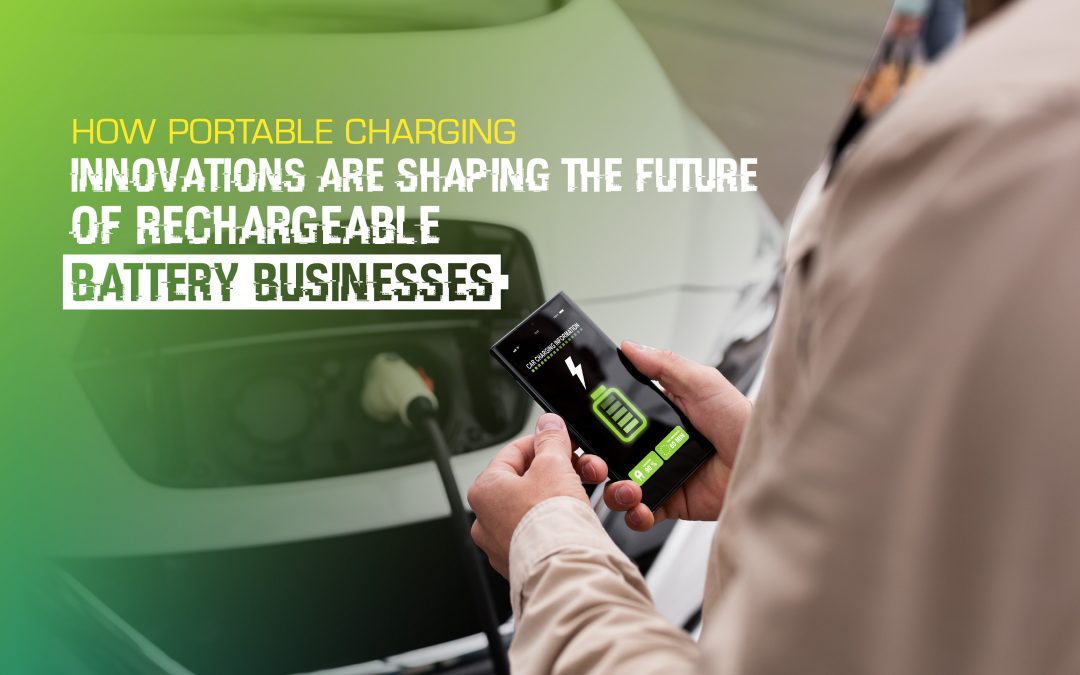In today’s tech-driven world, the quest for efficient and convenient power solutions is relentless. Portable charging innovations are at the forefront of this evolution, transforming how we power our devices and reshaping the rechargeable battery industry. Let’s delve deeper into the innovations driving this change and their impact on the business landscape.
1. Fast Charging Technology
Fast charging technology is revolutionizing the portable charging experience by drastically reducing the time it takes to power up devices. Traditional charging methods could take hours to fully charge a device, but advancements in fast charging have reduced this to minutes.
Key Innovations:
- USB-C Power Delivery (PD): USB-C PD supports higher power transfer rates, allowing for rapid charging of various devices including smartphones, tablets, and laptops. It can deliver up to 100W of power, significantly reducing charging time.
- Qualcomm Quick Charge: This technology adjusts the voltage and current to charge devices more quickly. For example, Quick Charge 5.0 can charge a phone to 50% in just 5 minutes.
Impact on Business: Businesses are investing in fast charging solutions to meet the growing demand for quick and efficient power. The focus is on developing batteries that can handle higher power levels without overheating, while also maintaining safety and longevity. Companies that can deliver fast, reliable charging solutions are likely to capture a larger market share.
2. Wireless Charging
Wireless charging has transitioned from a luxury feature to a standard expectation. This technology allows devices to charge without the need for physical connectors, using electromagnetic fields to transfer energy.
Key Innovations:
- Qi Wireless Charging: The Qi standard, developed by the Wireless Power Consortium, is widely adopted in consumer electronics. It allows for contactless charging using inductive coupling, making it convenient for everyday use.
- MagSafe Technology: Apple’s MagSafe provides a magnetic alignment for more efficient wireless charging. This technology ensures the charging pad is perfectly aligned with the device, optimizing the charging process.
Impact on Business: Wireless charging is driving the development of new consumer electronics and accessories. Businesses are exploring integration options for various products, including smartphones, wearables, and even furniture. The challenge is to create efficient wireless charging solutions that offer fast charging speeds and compatibility with multiple devices.
3. Solar-Powered Chargers
Solar-powered chargers harness the sun’s energy to provide a renewable and eco-friendly charging solution. These chargers are particularly useful for outdoor activities and regions with limited access to traditional power sources.
Key Innovations:
- High-Efficiency Solar Panels: Advances in solar panel technology have increased the efficiency of solar chargers. Panels with higher conversion rates can generate more power in less time.
- Portable Solar Chargers: Compact and foldable designs make it easier to carry solar chargers on the go. Some models come with built-in batteries to store energy for later use.
Impact on Business: The rise in environmental awareness is driving the demand for sustainable energy solutions. Businesses are focusing on improving the efficiency and portability of solar chargers to appeal to eco-conscious consumers and outdoor enthusiasts. There is also potential for integrating solar technology into various devices and applications.
4. Foldable and Flexible Batteries
Foldable and flexible batteries represent a significant leap forward in battery technology. These batteries can be bent, folded, or stretched without affecting their performance, opening up new possibilities for device design.
Key Innovations:
- Organic Light-Emitting Diode (OLED) Batteries: OLED technology allows for flexible and lightweight batteries that can be integrated into various form factors, including wearable devices and flexible electronics.
- Graphene-Based Batteries: Graphene’s flexibility and high conductivity make it an ideal material for developing flexible batteries with improved performance and durability.
Impact on Business: The development of foldable and flexible batteries is creating new opportunities for innovation in consumer electronics and wearable technology. Businesses are exploring applications in areas such as flexible screens, smart clothing, and advanced wearables. The challenge is to ensure these batteries meet performance and safety standards while offering the desired flexibility.
5. Smart Charging Solutions
Smart charging solutions leverage advanced technologies such as artificial intelligence (AI) and the Internet of Things (IoT) to enhance the charging experience. These solutions offer features like real-time monitoring, automatic power distribution, and predictive maintenance.
Key Innovations:
- AI-Powered Charging: AI algorithms can optimize charging speed and battery health based on usage patterns. This ensures devices are charged efficiently while extending battery life.
- IoT Integration: IoT-enabled chargers can connect to apps and cloud services, providing users with insights into their charging habits and battery health.
Impact on Business: Smart charging solutions are becoming increasingly popular as they offer a more personalized and efficient charging experience. Businesses are investing in AI and IoT technologies to develop smart chargers that provide real-time data and advanced features. This innovation not only enhances user experience but also differentiates products in a competitive market.
Impact on the Rechargeable Battery Business
Market Expansion: The innovations in portable charging are expanding the rechargeable battery market by creating new applications and opportunities. Businesses are exploring markets beyond consumer electronics, such as automotive and renewable energy, driven by advancements in battery technology.
Increased Competition: The rapid pace of innovation has intensified competition among battery manufacturers. Companies are investing heavily in R&D to stay ahead and offer the latest technologies. This competitive environment is driving continuous improvement and pushing the boundaries of what’s possible in battery technology.
Consumer Expectations: As portable charging technologies advance, consumer expectations are evolving. Users now seek faster, more efficient, and eco-friendly charging solutions. Businesses must adapt to these expectations by offering products that deliver superior performance and align with sustainability goals.
Regulatory and Environmental Considerations: With the growth of portable charging solutions, regulatory and environmental considerations are becoming more critical. Businesses must comply with safety regulations and focus on sustainability practices, including recycling and using eco-friendly materials. Meeting these requirements can enhance brand reputation and customer trust.
Future Trends to Watch
Integration with Wearable Technology: The integration of portable charging solutions with wearable technology is a growing trend. Innovations in charging wearables, such as smartwatches and fitness trackers, will drive growth in this segment. Businesses should focus on developing compact and efficient charging solutions tailored for wearables.
Advancements in Battery Chemistry: Research in battery chemistry is paving the way for more efficient and longer-lasting rechargeable batteries. Developments in solid-state batteries and other advanced technologies promise significant improvements in performance, safety, and energy density.
Customization and Personalization: The demand for customized and personalized portable charging solutions is on the rise. Businesses that offer tailored products and unique designs will likely attract a broader customer base. Providing options for personalization and customization can differentiate products in a crowded market.
Conclusion
Portable charging innovations are reshaping the rechargeable battery industry by enhancing convenience, efficiency, and sustainability. Businesses that embrace these advancements and adapt to evolving consumer expectations will be well-positioned for success in this dynamic market. By staying ahead of technological trends and investing in innovation, companies can shape the future of portable charging and capitalize on new opportunities













